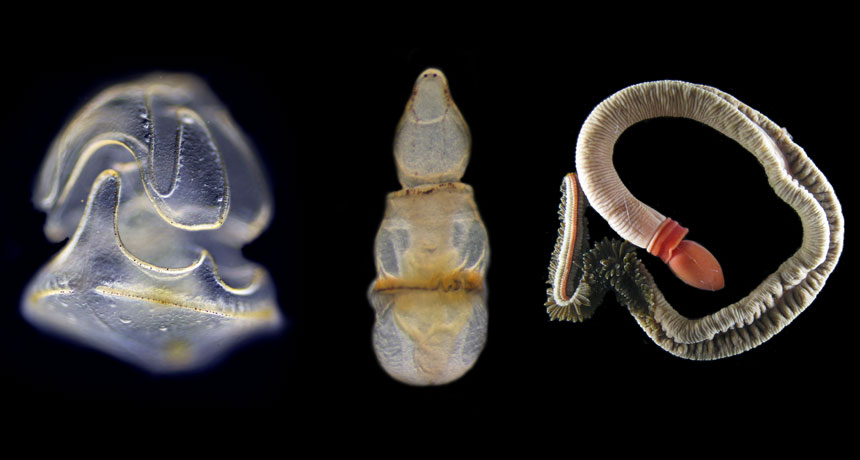These acorn worms have a head for swimming
Putting off trunk development may make catching prey easier, researchers say

GETTING A HEADSTART This marine acorn worm spends its larval phase as essentially a “swimming head” (left) before metamorphosing into a juvenile (middle), according to new genetic analyses. Adult worms (right) can grow up to about 40 centimeters.
Paul Gonzalez/Stanford University (larva), Chris Patton/Stanford University





